Create a dataflow
Overview
The estimated time to complete the lab is 45 minutes
In this lab, you will create a dataflow to deliver date dimension data sourced from the Azure Synapse Adventure Works data warehouse. The dataflow will provide a consistent definition of date-related data for use by the organization’s business analysts.
In this lab, you learn how to:
-
Use Power Query Online to develop a dataflow.
-
Use Power BI Desktop to consume a dataflow.
Get started
In this exercise, you will prepare your environment.
Load data into Azure Synapse Analytics
Note: If you have already loaded data into Azure Synapse Analytics using a git clone, you can skip this task and proceed to Set up Power BI.
- Sign into the Azure portal using the login information located on the Resources tab on the right side of the VM.
-
Use the [>_] button to the right of the search bar at the top of the page to create a new Cloud Shell in the Azure portal, selecting a PowerShell environment and creating storage if prompted. The cloud shell provides a command line interface in a pane at the bottom of the Azure portal, as shown here:

Note: If you have previously created a cloud shell that uses a Bash environment, use the the drop-down menu at the top left of the cloud shell pane to change it to PowerShell.
-
Note that you can resize the cloud shell by dragging the separator bar at the top of the pane, or by using the —, ◻, and X icons at the top right of the pane to minimize, maximize, and close the pane. For more information about using the Azure Cloud Shell, see the Azure Cloud Shell documentation.
-
In the PowerShell pane, enter the following command to clone this repo:
rm -r dp500 -f git clone https://github.com/MicrosoftLearning/DP-500-Azure-Data-Analyst dp500 -
After the repo has been cloned, enter the following commands to change to the setup folder and run the setup.ps1 script it contains:
cd dp500/Allfiles/04 ./setup.ps1 -
When prompted, enter a suitable password to be set for your Azure Synapse SQL pool.
Note: Be sure to remember this password!
-
Wait for the script to complete - this typically takes around 20 minutes; but in some cases may take longer.
- After creating the Synapse workspace and SQL Pool and loading the data, the script pauses the pool to prevent unnecessary Azure charges. When you’re ready to work with your data in Azure Synapse Analytics, you’ll need to resume the SQL Pool.
Clone the repository for this course
-
On the start menu, open the Command Prompt

-
In the command prompt window, navigate to the D drive by typing:
d:Press enter.

-
In the command prompt window, enter the following command to download the course files and save them to a folder called DP500.
` git clone https://github.com/MicrosoftLearning/DP-500-Azure-Data-Analyst DP500 `
-
When the repository has been cloned, close the command prompt window.
-
Open the D drive in the file explorer to ensure the files have been downloaded.
Set up Power BI Desktop
In this task, you will set up Power BI Desktop.
-
To open File Explorer, on the taskbar, select the File Explorer shortcut.
-
Navigate to the D:\DP500\Allfiles\05\Starter folder.
-
To open a pre-developed Power BI Desktop file, double-click the Sales Analysis - Create a dataflow.pbix file.
-
If you’re not already signed in, at the top-right corner of Power BI Desktop, select Sign In. Use the lab credentials to complete the sign in process.

-
To save the file, on the File ribbon, select Save as.
-
In the Save As window, go to the D:\DP500\Allfiles\05\MySolution folder.
-
Go to Power BI Desktop and select File then Options and settings then Options then Security and under Authentication Browser check Use my default web browser and select Save.
You will update the Power BI Desktop solution to use a dataflow to source date dimension data.
Sign in to the Power BI service
In this task, you will sign in to the Power BI service, start a trial license, and create a workspace.
Important: If you have already setup Power BI in your VM environment, continue to the next task.
-
In a web browser, go to https://powerbi.com.
-
Use the lab credentials to complete the sign in process.
Important: You must use the same credentials used to sign in from Power BI Desktop.
-
At the top-right, select the profile icon, and then select Start trial.
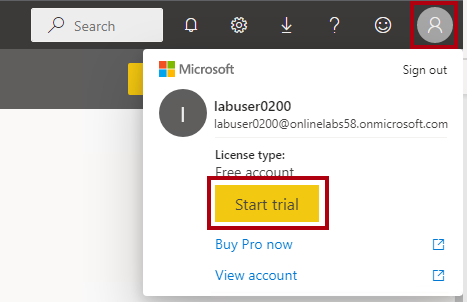
-
When prompted, select Start trial.
-
Do any remaining tasks to complete the trial setup.
Tip: The Power BI web browser experience is known as the Power BI service.
-
Select Workspaces and Create a Workspace.

-
Create a workspace named DP500 labs and select Save.
Note: The workspace name must be unique within the tenant. If you’re getting an error, change the workspace name.
Once created, the workspace is opened. In a later exercise, you will create a dataflow for this workspace.
Start the SQL pool
In this task, you will start the SQL pool.
-
In a web browser, go to https://portal.azure.com.
-
Use the lab credentials to complete the sign in process.
-
Use the search bar to locate Azure Synapse Analytics.
-
Select the Azure Synapse Analytics instance.
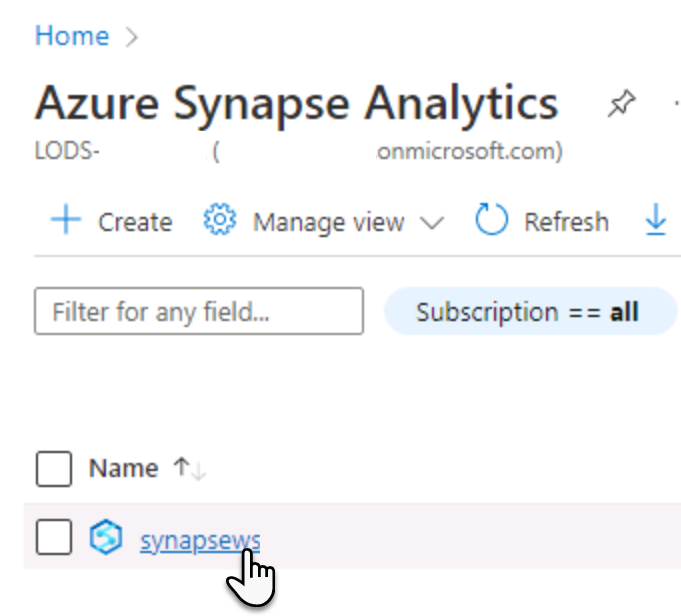
-
Locate and select the dedicated SQL pool.

-
Resume the dedicated SQL pool.
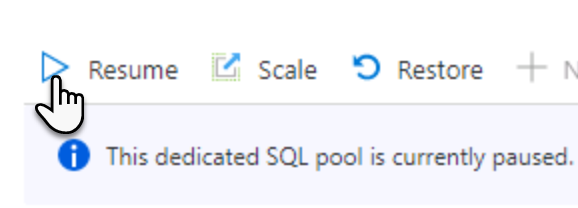
Important: The SQL pool is a costly resource. Please limit the use of this resource when working on this lab. The final task in this lab will instruct you to pause the resource.
Develop a dataflow
In this exercise, you will develop a dataflow to support Power BI model development. It will provide a consistent representation of the data warehouse date dimension table.
Review the data model
In this task, you will review the data model developed in Power BI Desktop.
-
Switch to the Power BI Desktop solution.
-
At the left, switch to Model view.

-
In the model diagram, notice the Date table.

The Date table was created by the business analyst. It doesn’t represent a consistent definition of date-related data, and it does not include helpful offset columns to support relative date filters. In a later exercise, you will replace this table with a new table sourced from a dataflow.
Create a dataflow
In this task, you will create a dataflow that represents a consistent definition of date-related data.
-
In the Power BI service, select New, Dataflow.
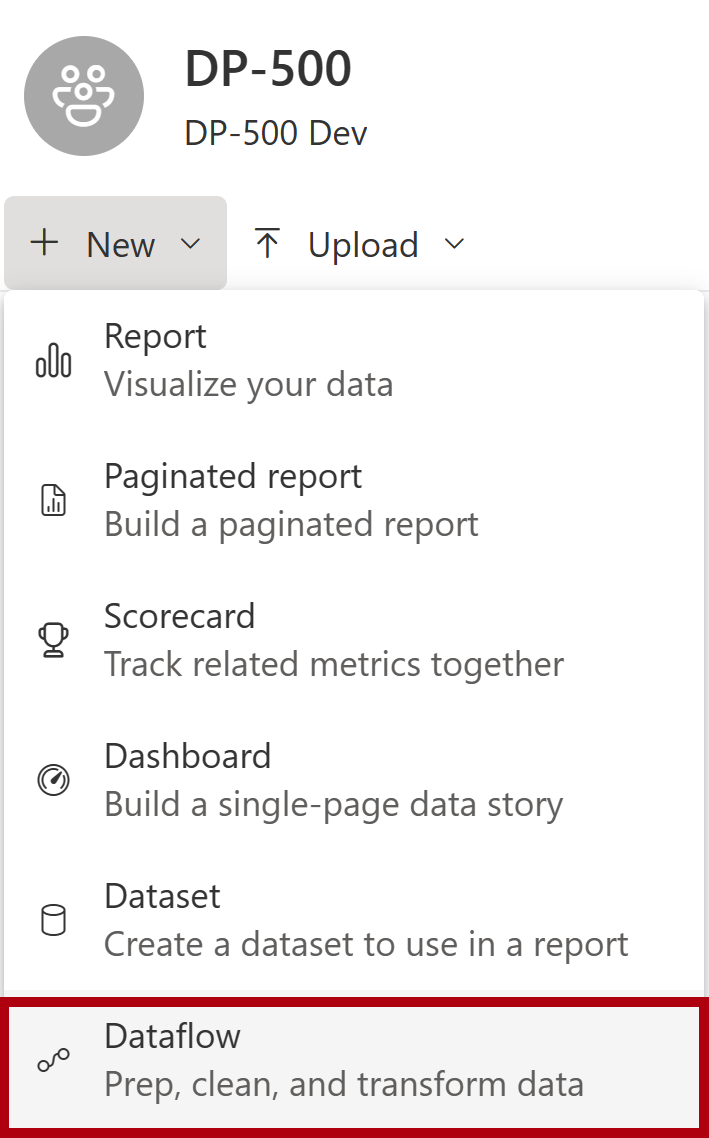
-
In the Define new tables tile, select Add new tables.
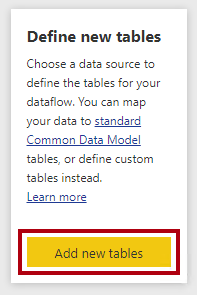
Adding new tables involves using Power Query Online to define queries.
-
To choose a data source, select Azure Synapse Analytics (SQL DW).

Tip: You can use the Search box (located at the top-right) to help find the data source.
-
Enter the Synapse Connection settings.
- Enter the Server name from the Azure Portal
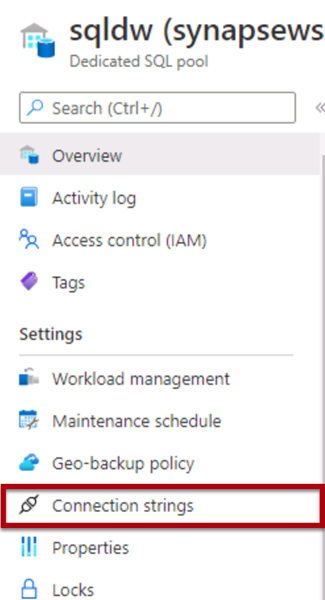
The Server name should look similar to:
synapsewsxxxxx.sql.azuresynapse.net
- Ensure the Authentication kind is Organizational account. If you are prompted to sign in, use the lab provided credentials.
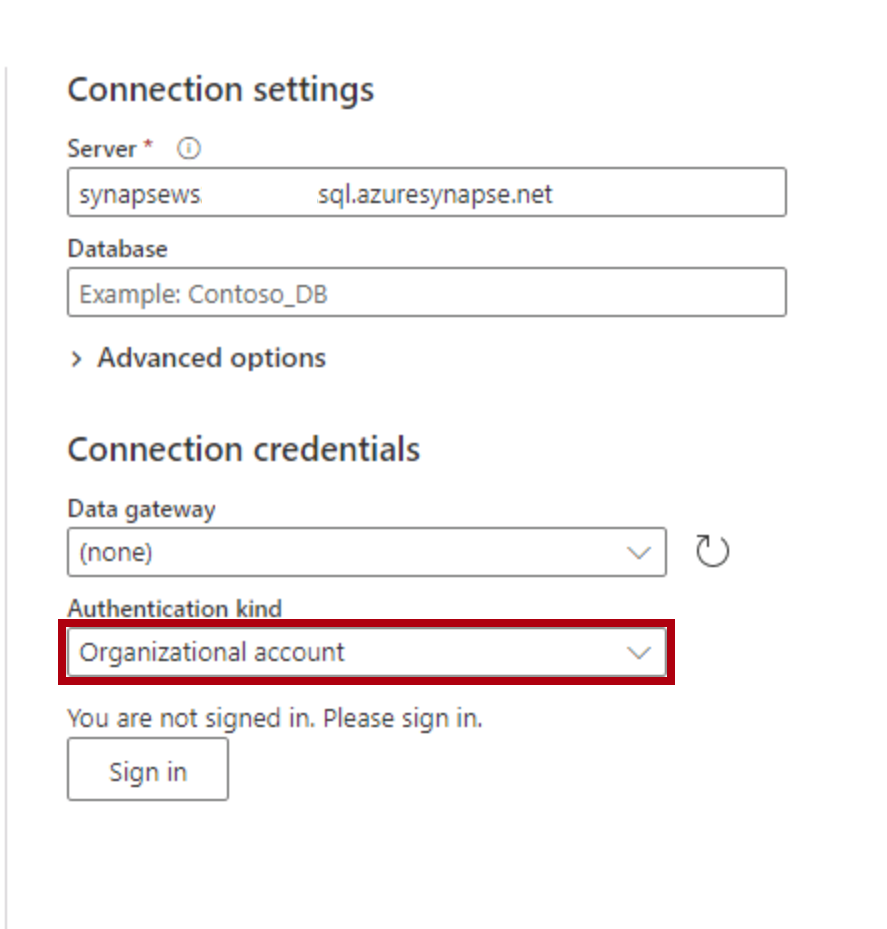
-
At the bottom-right, select Next.

-
In the Power Query navigation pane, expand the sqldw and select (do not check) the DimDate table.
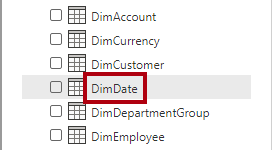
-
Notice the preview of table data.
-
To create a query, check the DimDate table.

-
At the bottom-right, select Transform data.

Power Query Online will now be used to apply transformations to the table. It provides an almost-identical experience to the Power Query Editor in Power BI Desktop.
-
In the Query Settings pane (located at the right), to rename the query, in the Name box, replace the text with Date, and then press Enter.

-
To remove unnecessary columns, on the Home ribbon tab, from inside the Manage Columns group, select the Choose Columns icon.

-
In the Choose Columns window, to uncheck all checkboxes, uncheck the first checkbox.

-
Check the following five columns.
-
DateKey
-
FullDateAlternateKey
-
MonthNumberOfYear
-
FiscalQuarter
-
FiscalYear
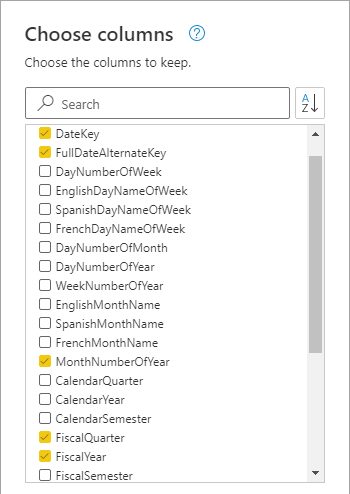
-
-
Select OK.

-
In the Query Settings pane, in the Applied Steps list, notice that a step was added to remove other columns.

Power Query defines steps to achieve the desired structure and data. Each transformation is a step in the query logic.
-
To rename the FullDateAlternateKey column, double-click the FullDateAlternateKey column header.
-
Replace the text with Date, and then press Enter.

-
To add a calculated column, on the Add Column ribbon tab, from inside the General group, select Custom Column.

-
In the Custom column window, in the New column name box, replace the text with Year.
-
In the Data type dropdown list, select Text.

-
In the Custom column formula box, enter the following formula:
Tip: All formulas are available to copy and paste from the D:\DP500\Allfiles\05\Assets\Snippets.txt.
"FY" & Number.ToText([FiscalYear]) -
Select OK.
You will now add four more custom columns.
-
Add another custom column named Quarter with the Text data type, using the following formula:
[Year] & " Q" & Number.ToText([FiscalQuarter]) -
Add another custom column named Month with the Text data type, using the following formula:
Date.ToText([Date], "yyyy-MM") -
Add another custom column named Month Offset (include a space between the words) with the Whole number data type, using the following formula:
((Date.Year([Date]) * 12) + Date.Month([Date])) - ((Date.Year(DateTime.LocalNow()) * 12) + Date.Month(DateTime.LocalNow()))This formula determines the number of months from the current month. The current month is zero, past months are negative, and future months are positive. For example, last month has a value of -1.
-
Add another custom column named Month Offset Filter (include spaces between the words) with the Text data type, using the following formula:
if [Month Offset] > 0 then Number.ToText([Month Offset]) & " month(s) future" else if [Month Offset] = 0 then "Current month" else Number.ToText(-[Month Offset]) & " month(s) ago"This formula transposes the numeric offset to a friendly text format.
Tip: All formulas are available to copy and paste from the D:\DP500\Allfiles\05\Assets\Snippets.txt.
-
To remove unnecessary columns, on the Home ribbon tab, from inside the Manage Columns group, select the Choose Columns icon.

-
In the Choose Columns window, to uncheck the following columns:
-
MonthNumberOfYear
-
FiscalQuarter
-
FiscalYear

-
-
Select OK.
-
At the bottom-right, select Save & close.

-
In the Save your dataflow window, in the Name box, enter Corporate Date.
-
In the Description box, enter: Consistent date definition for use in all Adventure Works datasets
-
Tip: The description is available to copy and paste from the D:\DP500\Allfiles\05\Assets\Snippets.txt.
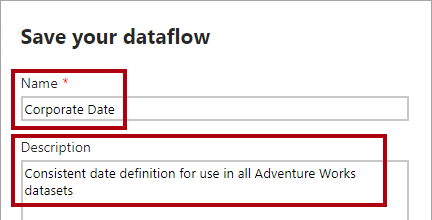
-
Select Save.

-
In the Power BI service, in the Navigation pane, select your workspace name.
This action opens the landing page for the workspace.
-
To refresh the dataflow, hover the cursor over the Corporate Date dataflow, and then select the Refresh now icon.

-
To go to the dataflow settings, hover the cursor over the Corporate Date dataflow, select the ellipsis, and then select Settings.
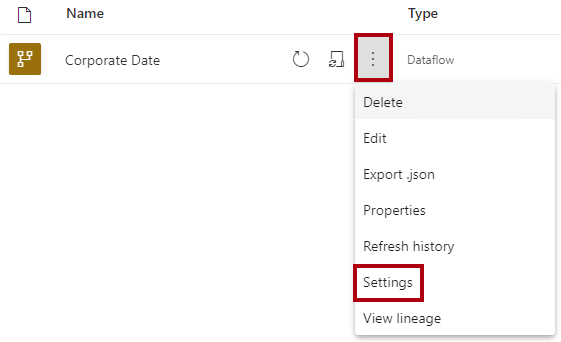
-
Notice the configuration options.
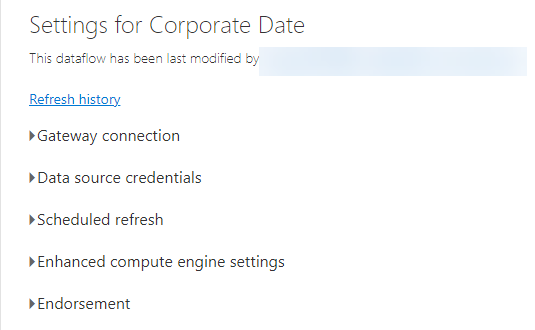
There are two settings that should be configured. First, scheduled refresh should be configured to update the dataflow data every day. That way, the month offsets will be calculated using the current date. Second, the dataflow should be endorsed as certified (by an authorized reviewer). A certified dataflow declares to others that it meets quality standards and can be regarded as reliable and authoritative.
In addition to configuring settings, permission should be granted to all content creators to consume the dataflow.
Consume a dataflow
In this exercise, in the Power BI Desktop solution, you will replace the existing Date table with a new table that sources its data from the dataflow.
Remove the original Date table
In this task, you will remove the original Date table.
-
Switch to the Power BI Desktop solution.
-
In the model diagram, right-click the Date table, and then select Delete from model.
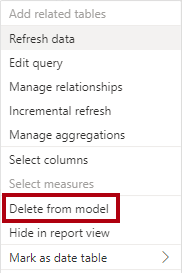
-
When prompted to delete the table, select OK.

Add a new Date table
In this task, you will add a new Date table that sources its data from the dataflow.
-
On the Home ribbon, from inside the Data group, select the Get data icon.

-
In the Get Data window, at the left, select Power Platform, and then select Power BI dataflows.
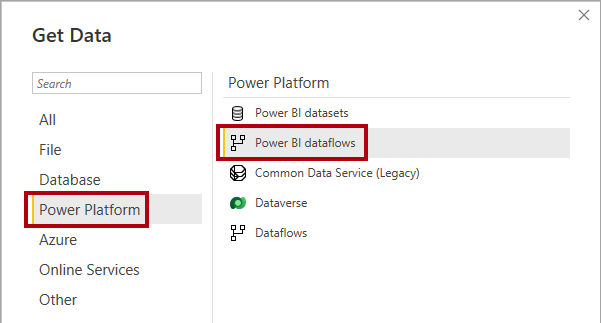
-
Select Connect.

-
In the Power BI dataflows window, select Sign in.

-
Use the lab credentials to complete the sign in process.
Important: You must use the same credentials used to sign in to the Power BI service.
-
Select Connect.

-
In the Navigator window, in the left pane, expand your workspace folder, and then expand the Corporate Date dataflow folder.

-
Check the Date table.

-
Select Load.

It is possible to transform the data using the Power Query Editor.
-
When the new table is added to the model, create a relationship by dragging the DateKey column from the Date table to the OrderDateKey column of the Sales table.
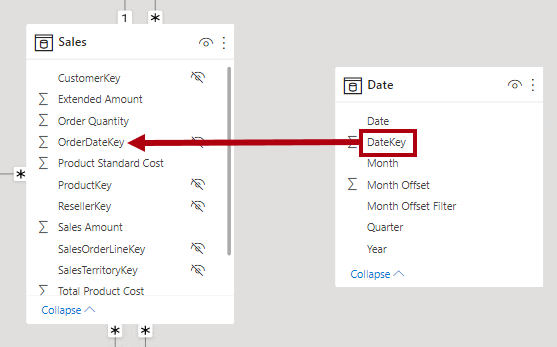
There are many other model configurations, like hiding columns or creating a hierarchy, that can be done.
Validate the model
In this task, you will test the model by creating a simple report layout.
-
At the left, switch to Report view.

-
To add a visual to the page, in the Visualizations pane, select the stack bar chart visual.
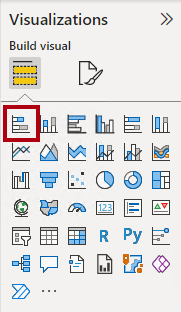
-
Resize the visual to fill the report page.
-
In the Data pane, expand the Date table, and then drag the Month Offset Filter field into the bar chart visual.

-
In the Data pane, expand the Sales table, and then drag the Sales Amount field into the bar chart visual.
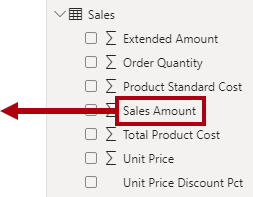
-
To sort the vertical axis, at the top-right of the visual, select the ellipsis, and then select Sort axis > Month Offset Filter.
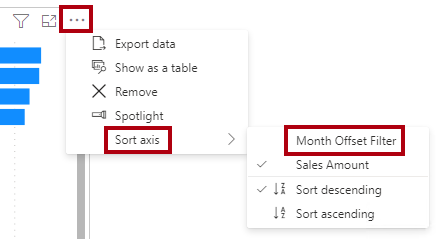
-
To ensure the month offset filter values sort chronologically, in the Data pane, select the Month Offset Filter field.
-
On the Column Tools ribbon tab, from inside the Sort group, select Sort, and then select Month Offset.
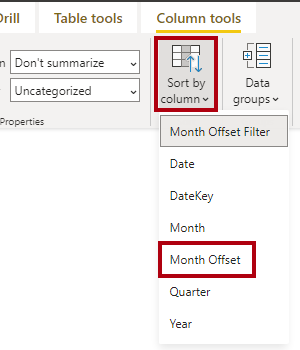
-
Review the updated bar chart visual that now sorts chronologically.
The main benefit of using date offset columns is that reports can filter by relative dates in a customized way. (Slicers and filters and also filter by relative date and time periods, but this behavior cannot be customized. They also don’t allow filtering by quarters.)
-
Save the Power BI Desktop file.
-
Close Power BI Desktop.
Pause the SQL pool
In this task, you will stop the SQL pool.
-
In a web browser, go to https://portal.azure.com.
-
Locate the SQL pool.
-
Pause the SQL pool.